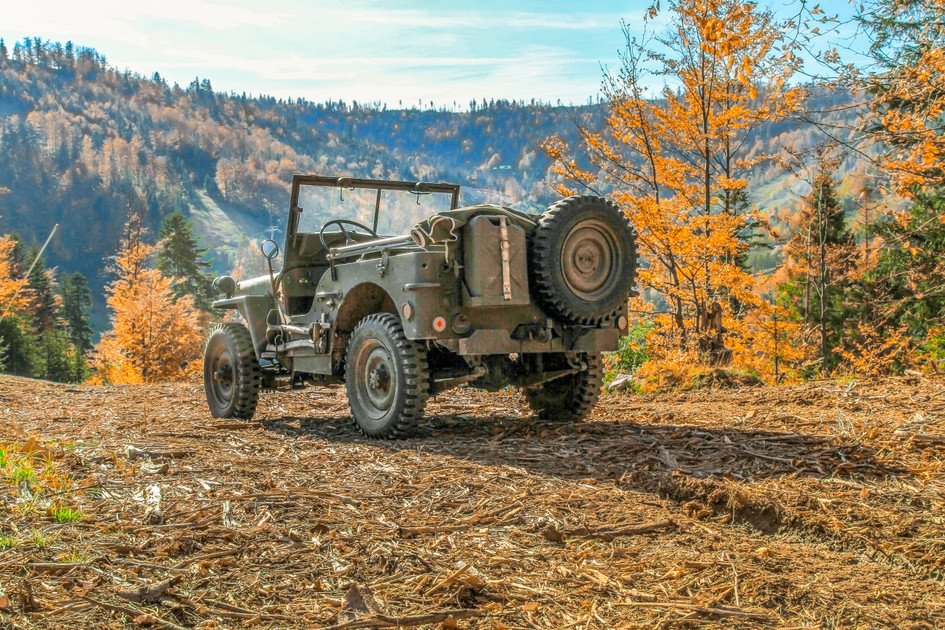Classic Willys-Overland Jeep: The Built for Anything Classic Quad
Jun 23rd 2021
Few cars are as “American” as the Willys Jeep. Initially built for work on the front lines of war and in the fields of American farmers, this was a car that had helped preserve democracy. It was a car that helped the average farmer mechanize his production. When it moved into the realm of passenger vehicles, the Jeep embodied the spirit of American adventure with its ability to “go anywhere and do anything.”
Both the original military Jeeps and civilian Jeeps are collectors’ vehicles today. The durability of the vintage Jeeps means that many of these vehicles still run as well today as they did decades ago, making them a functional and piece of wartime history or Americana.
How a Military Invention Became a Civilian Staple
When the US military put out a call for a 4-wheel drive vehicle for troops in WWII, Willys-Overland was one of three companies to submit a design, a Quad prototype they completed in only 75 days. This would become the Willys MA and Willys MB models. Known by the nickname “Jeep,” the Willys MB could carry mounted machine guns, plow snow, serve as ambulances, and drive on railroad tracks.
After the end of WWII, Willys-Overland recognized both the consumer appeal of their 4x4 and the appreciation of the Jeep name after a war victory
Willys reimagined the military Jeep as a workhorse for peacetime. With a few modifications, they released the first civilian Jeep in 1945. On farms, a single Jeep could do the work of a tractor or two draft horses, operating for 10 hours straight on all terrains without overheating the engine. Manufacturers soon put a number of farming tools on the market that were compatible with Jeeps.
Off of the farm, Jeeps were the vehicles of choice for work in rugged terrain, off road adventures, daily driving, and even as the base of Zamboni ice resurfacers. Over the next 4 decades, Willys-Overland continued to modify and improve their classic Jeep, releasing several models that remain popular with collectors today including:
- CJ-2A - Although the post-war market was filled with war surplus Jeeps, the CJ-2A still did remarkably well. Modifications made it more comfortable than military with better shocks and cushioned seating, and also allowed for highway speeds up to 60mph.
- CJ-3A - Willys made a few updates between the CJ-2A and CJ-3A models, including a one-piece windshield, a sturdier rear-axle, and a more robust transmission. This model would be the base model for the Jeep used in the Korean War.
- CJ-3B - This model introduced the powerful Hurricane “F-Head” engine, providing 25% more horsepower and more torque as the lack of power had been a common complaint of earlier models. The look stayed mostly the same except for a taller hood to accommodate the larger engine.
- CJ-5 - The CJ-5 debuted in 1955 with a look that was to be the precursor of today’s Jeep. It was slightly larger than prior models and was the first marketed as a recreational vehicle. Over 600,000 CJ-5s were produced over 3 decades.
Like the civilian Jeep models, military Jeeps evolved over the years as well. The Vietnam War and Korean War introduced new updates to the original design and specifications, including a waterproof ignition and different body styles for different wartime needs.
If you need parts for your military or civilian model Willys, Vintage Auto Garage sells parts for electrical systems, cooling systems, 6 volt to 12 volt conversions, and more. Browse our website to see what we have available or call us for assistance in sourcing the parts you need.

